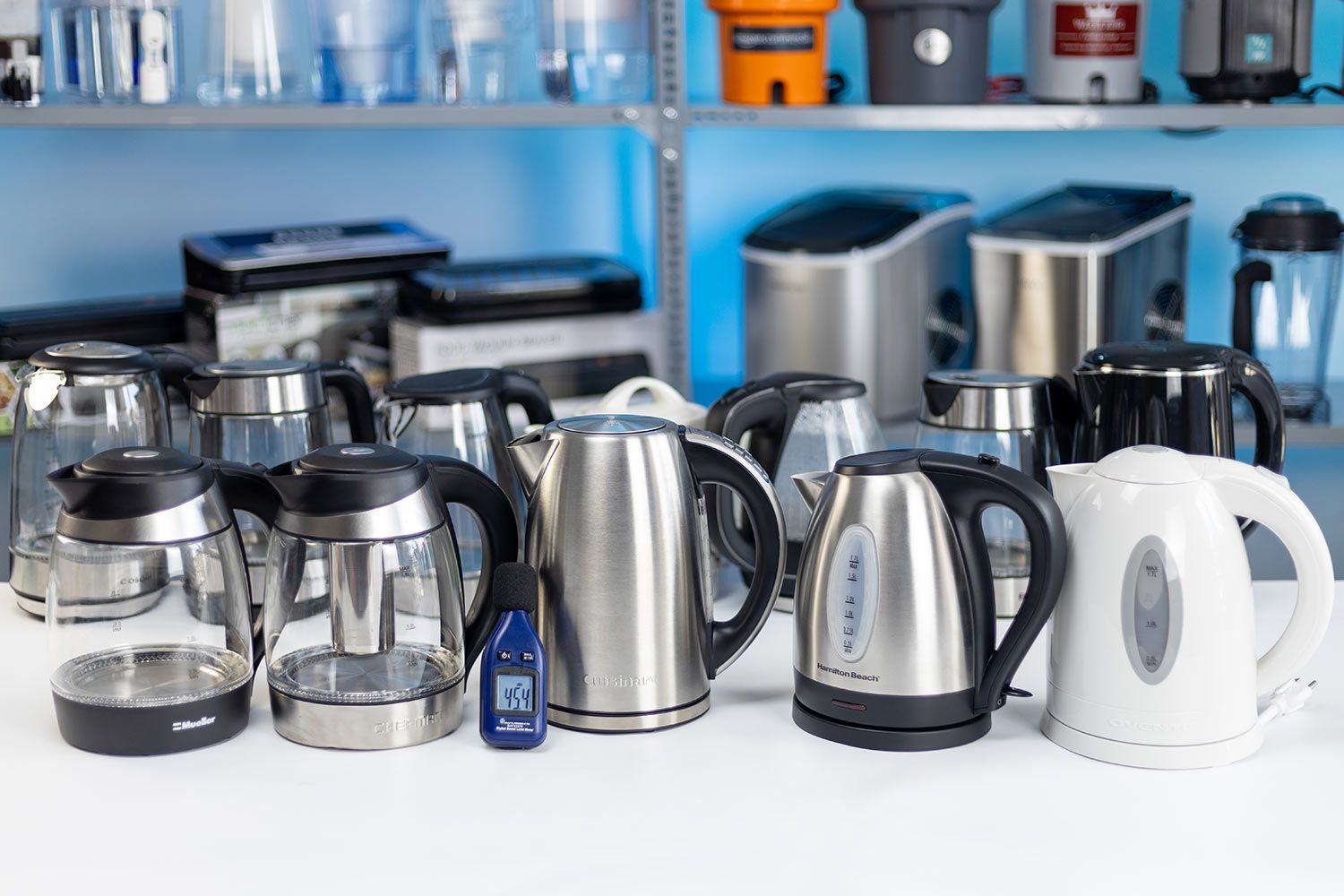Why Has My Electric Kettle Gone Noisy?: Troubleshooting Tips

Why has my electric kettle gone noisy? A noisy kettle can be annoying.
It might indicate an issue that needs attention. Electric kettles are a staple in many kitchens. They heat water quickly for tea, coffee, and other needs. But when they start making unusual sounds, it can be concerning. There are several reasons why your kettle might become noisy.
From simple fixes to possible technical problems, understanding the cause can help you address it. This blog post explores the common reasons behind a noisy electric kettle and what you can do about it. Whether it’s a minor issue or something more serious, knowing the cause can save you time and worry. Let’s dive in and find out why your kettle is making noise.

Credit: www.amazon.com
Common Reasons For Noisy Kettles
Limescale can build up inside your kettle. This happens over time. It makes the kettle noisy. The buildup comes from minerals in water. Hard water has more minerals. They stick to the kettle’s heating element. The limescale creates more noise when the water heats. Cleaning the kettle helps. Use vinegar or a limescale remover. This reduces noise and keeps the kettle working well.
Sometimes parts inside the kettle become loose. This can cause noise. The heating element may rattle. The lid or handle may also move. Tighten any loose parts. Check screws and bolts. Make sure everything is secure. A well-maintained kettle is quieter. Regular checks help find loose components. Fixing them early prevents more noise.
Identifying Limescale Buildup
You may see white, chalky spots inside the kettle. The water may take longer to boil. The kettle might sound louder than usual. The taste of the water may change. These are signs of limescale.
Limescale can make the kettle less efficient. It can cause the kettle to use more power. The heating element can get damaged. This can shorten the life of your kettle. Cleaning the kettle can help. Removing limescale will make it work better.
Cleaning And Descaling Your Kettle
White vinegar and water can help clean your kettle. Mix equal parts and pour into the kettle. Boil the mixture and then let it cool. Rinse the kettle well to remove the vinegar smell. Lemon juice also works. Squeeze a lemon into water and boil. Let it sit for 30 minutes. Rinse well afterwards. Baking soda can help too. Mix it with water and scrub the inside of the kettle.
Many stores sell descaling products for kettles. These products are easy to use. Follow the instructions on the package. Usually, you mix the product with water. Then, boil and rinse your kettle. Make sure to rinse well to remove any leftover chemicals. These products work fast. They remove lime scale and make your kettle quiet again.

Credit: shouldit.com
Checking For Loose Components
Look at the base of the kettle. Check for any loose parts. A loose part can make noise. Move the kettle gently. Listen for rattling sounds. Examine the power cord too. Make sure it is secure. A loose cord can cause noise.
Find all the screws and bolts. Use a screwdriver to tighten them. Do not over-tighten. This can break the parts. Check each screw one by one. Loose screws can cause a lot of noise. Be careful while tightening. You do not want to strip the threads. Tighten gently for best results.
Addressing Electrical Issues
A noisy electric kettle often has a faulty heating element. The element heats the water. If it fails, the kettle makes noise. This noise can be loud or annoying. It may also mean the kettle is not heating well. Check the element for any visible damage. Replace it if needed. This can fix the noise issue.
The power cord can also cause noise. A damaged or loose power cord may make the kettle noisy. Inspect the cord for any wear or breakage. Ensure it is tightly connected. If the cord is bad, replace it. This might solve the noise problem. A good cord is important for safe use.
Preventative Maintenance Tips
Clean your kettle often. Use a mixture of vinegar and water. This helps remove mineral deposits. Rinse well after cleaning. Dry it completely before use. Never use harsh chemicals. They can damage your kettle.
Store your kettle in a dry place. Keep it away from moisture. Moisture can cause rust. Make sure the lid is closed. This keeps dust out. Avoid wrapping the cord tightly. It can damage the cord.
When To Replace Your Kettle
If your kettle has cracks, it could be dangerous. Leaks are another bad sign. Rust inside the kettle can be harmful. A broken handle or lid is hard to fix. Strange noises might mean big problems. These signs mean it’s time for a new kettle.
Look for a kettle with good reviews. Check the warranty for safety. Make sure it has auto shut-off. A boil-dry protection feature is also important. Think about the size and design you like. Picking the right kettle will give you peace of mind.

Credit: www.youtube.com
Consulting Professional Help
To fix a noisy kettle, you need a reliable technician. Ask friends for recommendations. Check online reviews. Make sure the technician has experience with electric kettles. A good technician can diagnose and fix issues quickly.
Repair costs vary. Simple repairs are usually cheaper. Complex issues may cost more. Always ask for a quote before work begins. Compare prices from different technicians. This helps you find a fair price.
Conclusion
Noisy electric kettles can be annoying. Regular maintenance helps reduce noise. Check for limescale buildup. Clean your kettle often to avoid deposits. Loose parts might also cause noise. Tighten screws and connections. Using filtered water can also help. Replace your kettle if it’s old or damaged.
A quiet kettle makes a better experience. Enjoy your tea time without the noise. Follow these tips for a peaceful kitchen.



